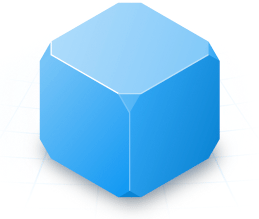What is the powercube?
There are just as many approaches to analysing and understanding power as there are debates about its meanings! Some of these are explored further in other approaches to power
 Here, we focus on one approach known as the powercube. This approach has developed over the last few years through work by members of the Power, Participation and Social Change (PPSC) team at IDS and other colleagues. Read about the background of the powercube or look at the visual portrayal of the cube.
Here, we focus on one approach known as the powercube. This approach has developed over the last few years through work by members of the Power, Participation and Social Change (PPSC) team at IDS and other colleagues. Read about the background of the powercube or look at the visual portrayal of the cube.
The powercube is a framework for analysing the levels, spaces and forms of power, and their interrelationship. It is useful in letting us explore various aspects of power and how they interact with each other. It lets us visually map ourselves and our situation, including other actors, relationships and forces, and then look at possibilities for movement, mobilization and change. It allows people to plan advocacy and to find entry points for action. Read more in the section on strategize for action.
The forms dimension refers to the ways in which power manifests itself, including its visible, hidden and invisible forms.
The spaces dimension of the powercube refers to the potential arenas for participation and action, including what we call closed, invited and claimed spaces.
The levels dimension of the powercube refers to the differing layers of decision-making and authority held on a vertical scale, including the local, national and global.
Each of these dimensions and its subcomponents will be explained further in the pages on forms, spaces, and levels.
The powercube can build on and be used to further explore the ‘expression of power’: ‘power over’, power to’, ‘power with’, and ‘power within’. It grew originally as a way of exploring how powerful actors control the agenda through and the ability of less powerful actors to build their awareness and action for change. But it can be also be used to think about the openings, levels and strategies to exercise agency, e.g. to strengthen the power to act. By looking at how alliances are formed with actors working on each dimension and aspect of the powercube, we can explore the potential of building ‘power with’ others. And by using concepts such as ‘invisible power’ and ‘created spaces’, we can explore issues of ‘power within’. For a good simple handout of each of these concepts together read to the Quick Guide to Power Analysis by Oxfam Programme Resource Centre (see related resources of this page) and powerpoint handouts by Jethro Pettit and Irene Gujit.
Though visually presented as a cube, it is important to think about each side of the cube as a dimension or set of relationships, not as a fixed or static set of categories. Each of the dimensions of the powercube – the levels, spaces and forms of power – may be seen as a continuum or a scale. For instance, while the levels dimension is often used to refer to local, national and global levels of decision-making, there can be many more levels as well. Similarly, there can be a variety of spaces for engagement along the spaces continuum.
It is important however to remember that each dimension of the powercube is constantly interrelating with the other, constantly changing the synergies of power. For instance, what happens at global decision-making levels can affect the spaces available for participation and engagement; which spaces for participation are available affect the forms of power within them.
In our work, we have found that it is often not useful to present all sides or dimension of the powercube at once. Rather, it is important to understand each dimension with its multiple facets one at a time, and then talk about the interrelationships. See John Gaventa’s powercube powerpoint presentation (in related resources section of this page) to see how each dimension builds up one at a time. While we may present discrete blocks in each, in fact, there are many variations along each continuum which can occur. It is best not simply to take a ‘tick-box’ approach in applying the concepts of the cube, but to work to understand the dynamic interrelationships of each of the ideas within it.
In using the powercube, one can start with any of its dimensions, and then go to the others. Begin by chosing your preferred starting place: forms, spaces or levels.

